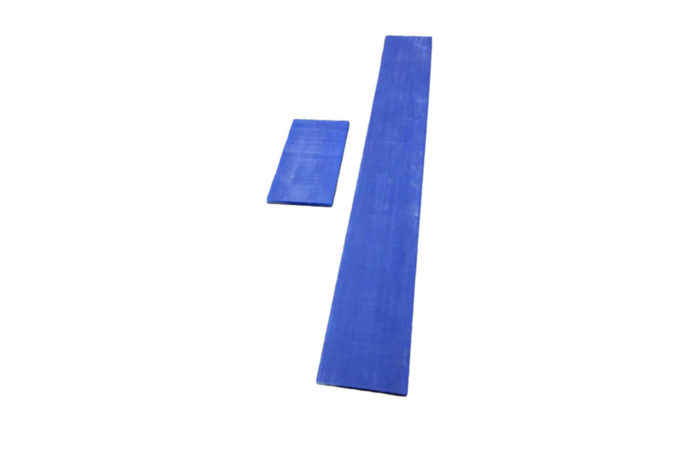Throughout North American railway construction history, rubber has been the most popular material used for load-bearing pads. In particular, soft natural gum rubber (consistently cheap and readily available) has been used in load-bearing applications for over 100 years. Although synthetics and neoprene compounds have emerged as related alternatives, rubber as a whole remains the industry standard for machinery equipment foundations, railway tie pads, and other applications requiring vibration isolation and shock reduction.
Is it still the best choice? Although it’s hard to argue against rubber’s low cost and availability, the family of materials is certainly not without shortcomings. Inferior wear materials cost operations both time and money in the long term; no matter what the application, organizations should look for wear materials that boast maximum durability and resilience to add value and save on repair and maintenance costs over time.
Are you looking for the best wear materials available for your next project? Read on to learn about the drawbacks of choosing rubber, as well as high-performance urethane alternatives provided by Iracore.
Rubber’s Durability Downfalls
Although rubbers of all kinds may have the performance characteristics to get the job done in many applications, many natural and synthetic rubbers are prone to premature wear caused by ground-level ozone, ultraviolet rays, and changes in temperature and weather. These environmental factors will eventually cause rubbers to “dry out,” crack, and ultimately wear out. While some synthetic rubbers (particularly neoprenes and butyls) are slightly more resilient, most rubbers used in load-bearing applications are highly susceptible to deterioration.
What does this mean for your next project? When wear materials, they require repair or replacement. These operations will end up costing both time and money, both in terms of the repairs themselves and the productivity lost to downtime. Replacing wear materials is an expensive endeavour; a superior load-bearing pad made from a material less prone to deterioration will save your organization on materials and labour while keeping your business running smoothly.
Urethane Load-Bearing Pads: A Cost-Effective Solution
Since 1957, Iracore has been committed to providing its customers with the very best in wear technology. Today, we manufacture cost-effective, value-adding wear materials suitable for a wide variety of use cases. Using our experience developing urethane components for heavy industry, we’ve engineered the next generation of load-bearing pads tailored to the most demanding applications.
Our proprietary polyurethane compounds are engineered for superior abrasion and ground-level ozone resistance compared to rubber, neoprene, and other wear materials. Additionally, Iracore load-bearing pads are less prone to deflection than their rubber counterparts, and requiring little (if any) reinforcement.
Our polyurethane formulations are developed through decades of field knowledge and testing to exceed our clients’ requirements, including our valued customers in the railway and transportation industries. All Iracore load-bearing pads are approved by AREMA-approved, exceeding all regulatory requirements and standards. Our pads are also approved by the American Railway Engineering and Maintenance-of-Way Association (AREMA) in addition to approval from major North American railway companies including CN, CPR, and BNSF. No matter what your next project demands, Iracore load-bearing pads are a superior choice for any operation.
Looking to Learn More About Iracore’s Load-Bearing Pads?
Contact us today to find out Iracore’s comprehensive wear component manufacturing capabilities.

Recent Comments